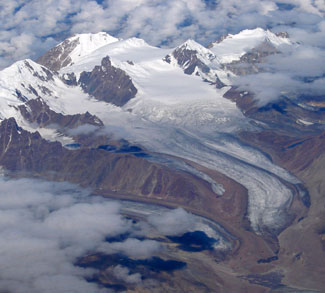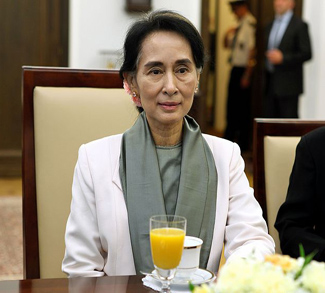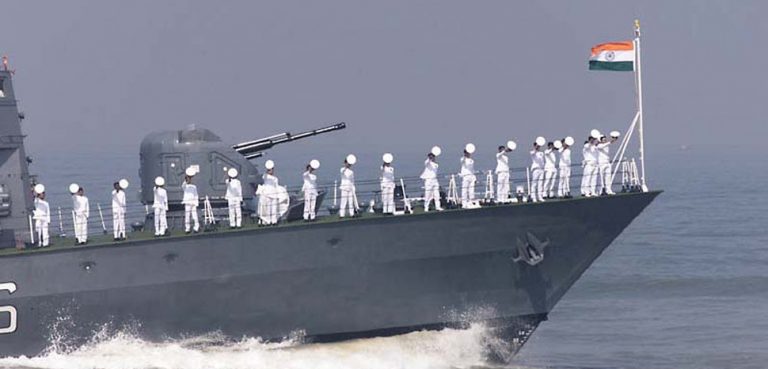In mid-April, a Chinese army unit of 30-odd troops crossed the Line of Actual Control (LAC) in Ladakh, India, and put up their tents for the night. This event, which is not an isolated incident, caused much consternation in the Indian media and symbolises the mutual suspicion that both countries have towards each other. These sentiments of mistrust are expressed in the fact that both sides have been building up their military presence along the LAC in recent years. Since both India and China are rising powers sharing a 3800 km border, of which large parts remain disputed, there is concern that increased cross-LAC tensions could become a source of potential instability. This article aims to elaborate upon the geostrategic significance of Aksai Chin for China and whether renewed tensions over this disputed land could drag both countries into another war.
Like India’s struggle with Pakistan over Kashmir, the dispute over Aksai Chin is almost as old as India itself. The origins of the dispute date back to the British Raj, which failed to clearly demarcate the border between its colony and China. By and large, today’s border issue revolves around two main boundary designs that have been put forward by the British. One of them, the Johnson-line, places Aksai Chin under Indian control, whereas the other, the MacDonald-line, classifies it as Chinese territory. However, neither of these boundaries has ever been codified in a binding bilateral treaty. And so, the status of the Indo-Chinese border in the western section at the time of Indian independence remained unsolved. With New Delhi using the Johnson-line as its national border, and Beijing adhering to the MacDonald-line, Aksai Chin became a breeding ground for conflict. In the 1950s, after the People’s Liberation Army (PLA) annexed Xinjiang and Tibet, Beijing ordered the construction of a road to connect both regions. Because the road, known as Highway 219, runs through Aksai Chin, China started to take effective control of the area. However, it was not until 1957 that the Indians learnt about the road. A proposal by Zhou Enlai to settle the border issue by recognising Indian control over Arunachal Pradesh and Chinese control over Aksai Chin was rejected by Jawaharlal Nehru. India’s move for a forward policy to keep the Chinese forces in check and eventually push them out of Aksai Chin (which the Indians perceive as an integral part of Ladakh) was met with a Chinese military campaign that plunged both countries in a brief but bloody war in 1962, ending in humiliation for India. Since then, the MacDonald-line has been the de facto border in the western sector.
Since the border war, Indo-Chinese relations have slowly but surely improved, especially since both countries opened up their economies for foreign trade and investment. Indeed, trade has probably been the main cause for a thaw in bilateral relations. Between FY 1990-91 and 2006-07, trade between the two countries has grown an impressive 522 times. India ranks as the number ten trading partner for China, while China has become the second most important trading partner for India. It thus seems, as the liberal school of international relations theory posits, that increased trade linkages have pacified both sides because it simply makes war too costly of an affair.
However, increased activity on the Chinese side of the LAC in recent years has still been met with great suspicion in New Delhi. In 2008, before the Olympics when Beijing expected unrest in Tibet and Xinjiang, Highway 219 was renovated. In addition to that, military observation posts and barracks as well as landing strips have been constructed in Aksai Chin. These facilities enhance China’s quick mobilization capabilities. India, in turn, has decided to deploy a tank formation in Ladakh, is training a 40,000-strong ‘mountain strike corps,’ and is planning to turn the airstrip in Nyoma into a fully-fledged air base. The Indian Ministry of Defence claims that these measures are a necessary response to China’s military build-up and its altered military doctrine. The latter seems to be a reference to China’s growing assertiveness in the South and East China Sea with respect to its territorial claims. Beijing, in response, states that its military growth is commensurate with its “international standing and meets the needs of its security and development interests.”
Coincidentally, the PLA published a White Paper at around the same time as when the Chinese army unit trespassed across the LAC into Indian territory. The paper elaborates upon PLA policies and priorities in the foreseeable future, though it does not describe a radically new doctrine; it is essentially a continuation and updated version of existing military strategic thinking. For example, the decade-old focus on ‘national defence’ which includes the principle of ‘active defence’, an option that allows for defensive pre-emptive strikes, are found in the latest White Paper. Similarly, the statement that the PLA is primarily trained to ‘win local wars’ is an idea that was put forth by Deng Xiaoping in 1985. Furthermore, PLA efforts to expand its navy’s blue water capabilities represent a policy that was originally started under Hu Jintao in order to protect Chinese interests overseas. However, the paper does give an interesting insight in the priorities that it establishes. The US’s increased military presence in the Asia-Pacific and the territorial dispute over the Diaoyu (or Senkaku, in Japanese) islets with Japan are given a high priority in its strategic considerations.
Paradoxically, these strategic priorities are fully compatible with the doctrinal principles that have been explained above. As Jonathan Holslag explains in his book Trapped Giant: China’s Military Rise, China’s strategic considerations are affected by its geographic position. The country’s demographic, industrial and financial heartland is concentrated the eastern coast. Stability and prosperity in this area is vital for stability in the rest of the country. Around China’s heartland is a belt of water and land that China only partially controls but which provides both threats (e.g. Japan, Taiwan, and the Korean peninsula) and opportunities (e.g. the resource rich waters of the South and East China Sea), and which are crucial for the stability, prosperity and sovereignty of the heartland. The next layer is what Holslag calls the belt of uncertainty which is approached by China “with a strong sense of geographical claustrophobia.” In this belt of uncertainty, India is located at or near three so-called corridors of peril: the Sino-Pakistani border through which opium and Islamist extremists could enter Xinjiang; the Tibetan plain which connects Tibet with the Tibetan refugees in India, Nepal and Bhutan; and the maritime corridor.
Unable to claim legitimacy from open and fair democratic governance, the Communist Party of China derives much of its legitimacy from the state’s ability to generate economic growth that allows higher standards of living for its population. The maritime supply routes from Africa and the Middle East are therefore not only crucial for China’s economy but also for its domestic stability. With a ‘hot’ South China Sea, a Malacca Strait that is effectively under the control of the US and Singaporeans, and an Indian Navy that is on its way to expand its capabilities to project power in the Arabian Sea and Indo-Pacific, it comes as no surprise that Beijing is trying to diversify its logistical lines. One of these alternative supply routes run through Pakistan from its seaport in Baluchistan’s Gwadar to Kashgar in Xinjiang via the Karakoram Highway in Gilgit-Baltistan. China has invested heavily in infrastructure projects in Pakistan in order to complete the realisation of this alternative supply route. It has even stationed several thousands of PLA troops in the region. While Beijing claims that these troops are there only to assist in the construction efforts, many foreign analysts believe that the PLA is there to stay – an arrangement that would suit both Islamabad and Beijing.
Pakistan’s flirtations with democracy do not permeate into Gilgit-Baltistan, which is under direct control of Islamabad and where the Pakistani army has far-reaching authority. This leads to much discontent among the local population against the Pakistani authorities. However, given the fact that a stable Gilgit-Baltistan, being the gateway between China and the rest of Pakistan, is essential to make the logistical supply route through Pakistan work, China has no interest in any form of potential instability in that region, whether domestically (i.e. the Baltistanis) or internationally (cf. the Kashmir-conundrum). China may therefore use its military presence in Gilgit-Baltistan as a lever to substantially increase the threshold for India to engage in a military conflict in that region as it may increase the risk of a military standoff with both Pakistan and China. In the same vein does Aksai Chin provide China a lever to exert pressure on India, namely not to undertake any actions, for example in the Arabian Sea or Indo-Pacific, that may harm fundamental Chinese economic and security interests.
In addition to vested interests involving security and economic concerns, Beijing would be highly unlikely to let go of Aksai Chin because, firstly, Highway 219 is the only veritable all-weather road that connects Tibet and Xinjiang. In that capacity, the road not only facilitates the ability to mobilise troops, but it also connects two of China’s least-developed regions. Infrastructure allows the increase of trade volumes and the movement of people and thereby contributes to regional development. Secondly, Aksai Chin is located at the north-western part of the Tibetan plain, clamped between the Kunlun mountain range to its north that separates Tibet from Xinjiang, and the Karakoram Range of the Himalayas to its west which forms a natural barrier between China and India. If it were to fall under Indian control, China would be left strategically exposed.
China’s interests in Aksai Chin are plentiful. The question that remains is whether the military build-up along the LAC significantly raises chances for armed conflict between India and Pakistan. This does not seem to be the case. With the memories of 1962 still alive, New Delhi would be unlikely to conduct a cross-LAC attack. For one, the Indian armed forces are arguably in the weaker position in terms of military capabilities vis-à-vis the PLA’s. And secondly, India would alienate its most important import trading partner and its second-most important overall trade partner. Similarly, Beijing will be ill-interested in engaging in armed conflict with India. Firstly, China’s claims that its rise is benign will lose credibility. The tensions between India and China could easily spill over to the Pacific region and would give a reason to the countries in that region to accelerate defensive expenditures and deepen security arrangements among each other against China. Additionally, an armed conflict is likely to push India and the US closer together. Both scenarios diametrically oppose China’s priorities and concerns as stated in the most recent White Paper.
China’s path to becoming a strong global power is being followed closely by the international community, and India is no exception. The build-up of military capabilities along the LAC in Aksai Chin seems to be primarily designed to safeguard Beijing’s economic and security interests in Pakistan, or more specifically in Gilgit-Baltistan, and in the Arabian Sea and Indian Ocean. The increased military presence in Aksai Chin acts as a deterrent and a lever that enables China exert pressure on India not to undertake any action that could harm its interests. India’s military build-up on its side of the LAC is of reactionary nature which in turn is the consequence of a classic example of the security dilemma that has pushed New Delhi to undertake action in Ladakh. Although tensions have flared up, chances of seeing another Indo-Chinese border war in the foreseeable future seem far-fetched because the forces that tie the two countries together are stronger than the forces pulling them apart.




